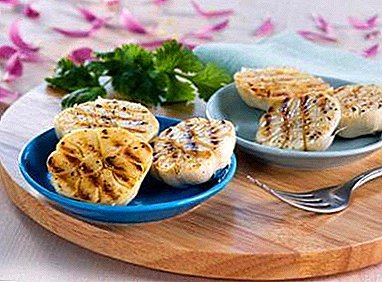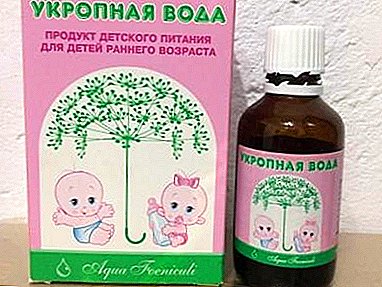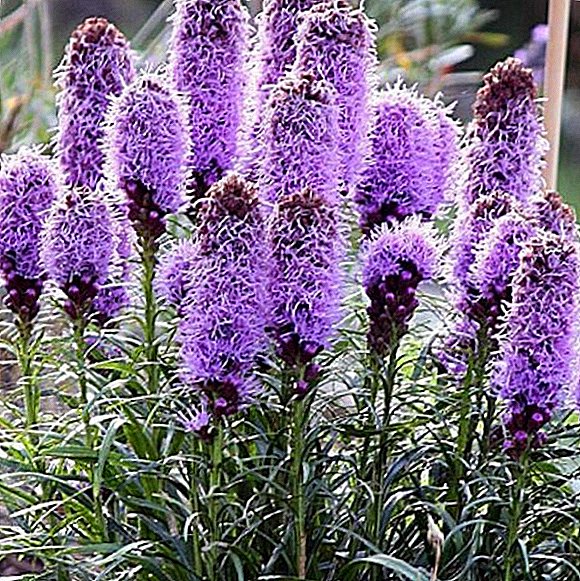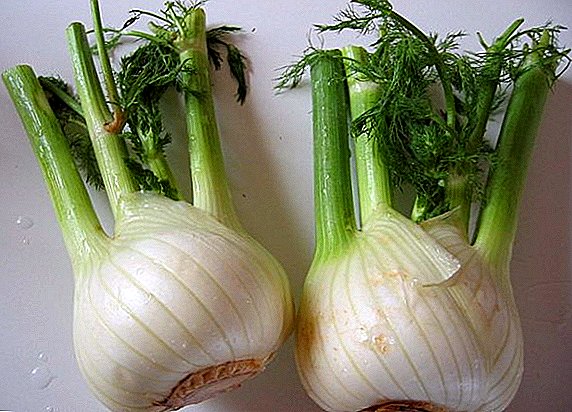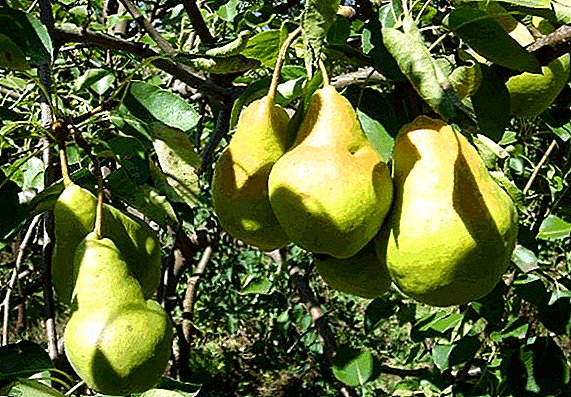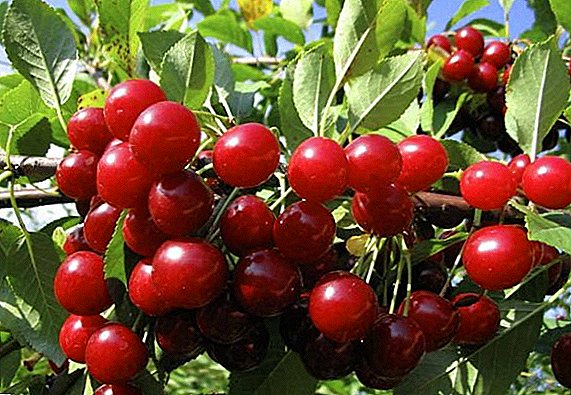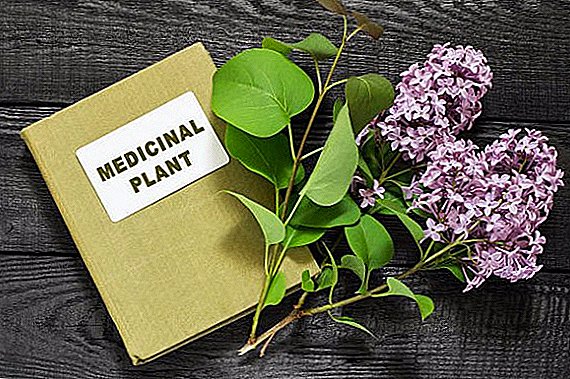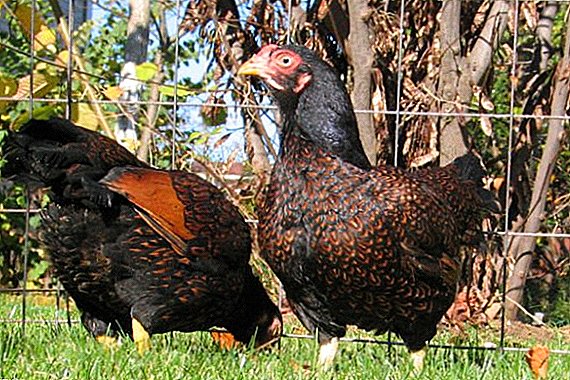 Cornish breed is very popular in the former Soviet Union. This bird has a bright unusual plumage, a strong structure of the body, as well as excellent meat, for which the breeders appreciate it. But when buying any bird you need to know the characteristics of the species in order to properly grow and care for the feathered family.
Cornish breed is very popular in the former Soviet Union. This bird has a bright unusual plumage, a strong structure of the body, as well as excellent meat, for which the breeders appreciate it. But when buying any bird you need to know the characteristics of the species in order to properly grow and care for the feathered family.
The history of the breed
Cornish luxury breed was bred in the English county of Cornwall (Cornwall), which is located in the south-west of England, at the beginning of the XIX century. The founder of the breed is U.R. Gilbert who crossed Malay fighting chickens with red azil (large cock with a long neck).  The history of this breed says that Gilbert wanted to bring a new species of fighting chickens, but the result greatly disappointed him, because the roosters turned out not only not belligerent, but on the contrary very peaceful and indifferent to other individuals. But the British continued to breed this breed, because it had other advantages: Cornish chickens are very hardy and have excellent, valuable meat.
The history of this breed says that Gilbert wanted to bring a new species of fighting chickens, but the result greatly disappointed him, because the roosters turned out not only not belligerent, but on the contrary very peaceful and indifferent to other individuals. But the British continued to breed this breed, because it had other advantages: Cornish chickens are very hardy and have excellent, valuable meat.
On the territory of the Soviet Union Kornoull chickens appeared relatively recently, namely in 1959, and very quickly became one of the most popular meat breeds of chickens.
The breeds of Brahma, Kochinquin, Jersey giant, Plymouth, Orpington, as well as Hubbard crosses, Master Gray, Phocic Chick, are distinguished by high rates of meat productivity.
Description and features
Cornish chickens have an interesting, rather unusual exterior. This breed always stands out against the background of other hens, especially due to its fatness and resinous black color with gold (brown) patches. 
Exterior
The appearance of chickens has such features:
- Color Cornish are black and white. Black representatives have black feathers with brown or gold (less often emerald) figured sharp inclusions from chest to tail. White representatives usually have a uniform color, less often with brown spots. Very rare bright red and brown individuals.
- Rib cage. Massive, forward acting.
- Legs. Not long but proportional to the body. Sturdy, yellow leather.
- Head. Large, proportional, with a strong yellow beak and deep eyes (red or orange).
- Crest. Red, in the form of a sheet or pod.
- Neck. Wide, strong.
- Tail. Relatively small, lowered down.

Character
Despite the fact that the very first representatives of this breed were very peaceful, the current Cornish is considered to be meat and fight breed. They are quite aggressive to other chickens, but do not climb into a fight if their territory has not been disturbed. It’s practically impossible for the owner to take hands, but a certain advantage is that they do not run under their feet, and there is no likelihood of getting under the wheels. 
Hatching instinct
The breeding instinct of this breed is very well developed. Maternal "love" is also well developed. The main problem is the large size of the hens. Because of this, some eggs may be smaller than the others, and, accordingly, unsuitable for incubation. Also common trouble is the excessive fearfulness of the future mother. She jumps up from the slightest rustle, and in the confusion she can inaccurately sit down and completely crush the egg.
Important! The owner, who wants to breed chickens, during the incubation period should be very quiet and careful.
Productive qualities
As mentioned above, representatives of the Cornish breed are meat hens, which also very quickly gain weight. The productive qualities of this breed have their own characteristics and disadvantages. 
Puberty and egg production
Chickens reach sexual maturity quite early: at 6-8 months. Cornish egg production is approximately 140-160 eggs throughout the year. Egg mass can vary from 55 to 60 g. The brown color of the shell can be light or saturated.
Read also: the period of egg production in chicken pullets, vitamins to increase egg production; the use of chicken eggs.
Growth and weight gain
Cornwall County chickens are characterized by rapid growth and weight gain. The weight of matured leaves can reach 3 kg, and roosters grow to 4-4.5 kg.
Important! It is worth noting that improper feeding or diet can contribute to bird obesity, and, accordingly, a significant decrease in meat quality.
What to feed
Feeding is a very important moment in the process of caring for the bird. Cornish chickens are prone to obesity, and therefore it is necessary to choose the right diet for both chicks and adult members. 
Adult flock
An adult flock is considered to be chickens that have reached two months of age. Representatives of this breed are unpretentious, the main thing is that the daily ration should contain all the necessary substances and elements.
Basically, poultry decided to feed legumes and cereals. Also, boiled root vegetables (carrots, beets), green fodder, and, in addition, special mineral supplements are added to the ration.
To improve the work of the stomach is to add to the food sand or small gravel.
Read also about feeding laying hens: cooking food at home, the rate of feed for a day.
Youngsters
The diet of young animals may contain the same components as the nutrition of adult chicken, but you should pay attention to the addition of vitamins that are necessary for the growing body (from vegetables and greens), and to a greater amount of protein food.
If the young growth begins to gain weight excessively, it is necessary to urgently put birds on a diet. It is also very important to supply chickens with enough water. 
Conditions of detention
Cornish is an unpretentious breed in terms of conditions of detention. They can live well in cages and on the floor (free movement). The main requirement is a sufficient area for walking, for the bird is large and it needs a place for free movement and running.
Check out the guidelines for choosing and buying a ready-made chicken coop, as well as self-production and arrangement of poultry houses, cages for chickens.
Coop Requirements
- Dimensions. The hen house itself must freely accommodate the entire bird family. Each individual accounts for about half a meter of area.
- Floor. Desirable wooden floor with natural flooring.
- Temperature. This breed can not tolerate cold, and therefore requires a fairly warm coop. The temperature should be + 25-30 ° C. In this regard, in winter, the coop should be equipped with additional heating, which is vital, especially for chickens.
- Roosting The roosts should be low enough. Due to the large weight and size of the chicken, jumping on high roosts is undesirable (there is a big chance to get hurt).
- Nests Each hen must have a nest (minimum 30/30 square).
- Bedding The litter should be natural. Layer must be at least 5 cm.
- Purity. Cleanliness is a very important thing. The coop must be cleaned once a day, and with a large population of 2 times. Chicken droppings and food residues can cause various diseases in poultry.

Walking yard
The walking yard should be spacious enough, because this breed is a heavyweight. Each chicken should be able to run at least 2 meters without crashing into another member of the family. Fencing is mandatory, because the birds are curious and can "go on reconnaissance," and drive them home will be extremely difficult.
Did you know? Laying eggs never lay in the dark. Chickens are always waiting for daylight or turning on the lamps.
Feeders and drinkers
Each chicken coop must have feeders and drinkers. The trough should allow all the chickens to feed at the same time, without interfering with each other. It is desirable to feed the young and adult herds separately. First, they have a slightly different diet, and secondly, they need a smaller size of the feeder.
Clean water should be available around the clock, so the owner must take care of the installation of the drinker. 
How to endure winter cold
Cornish is very bad tolerate winter cold. The chicks have a long plumage, and therefore freezing is a deadly danger for them.
The coop must be additionally heated in the winter. The minimum temperature should be at least + 5 ° C, but even this indicator is considered highly undesirable.
Learn how to build a chicken coop for 20 chickens for the winter with your own hands.
Advantages and disadvantages
Cornish, like any other breed of chickens, have both advantages and disadvantages.
The main advantages of the breed are:
- rapid growth and high rate of weight gain;
- excellent meat (tender, rich);
- roosters of this species are used to breed more productive breeds;
- relative simplicity to food and housing.
 Disadvantages:
Disadvantages:
- low hatchability rates;
- high risk of obesity;
- slower growth of feathers in chickens;
- long-term maintenance contributes to lower meat quality.
Did you know? Chickens have good intelligence: each individual is capable of storing in memory more than 100 distinctive features of other birds and people. Therefore, once offended by a twig, it will not work in her confidence anymore. And on the contrary, she remembers those who feed her and treat her with love, and pays the same.
Video: Cornish Hens
Cornish Reviews


So, at the institution of Cornish you need to know that the hens of this breed have not only a beautiful exterior, but also excellent taste. You can grow them as you please, the main thing is the space for running, and with the right balanced nutrition, no problems are guaranteed. Roosters are rather gentle in nature, which allows them to be kept together with other avian representatives.


